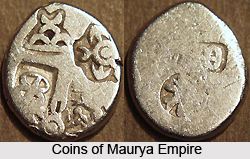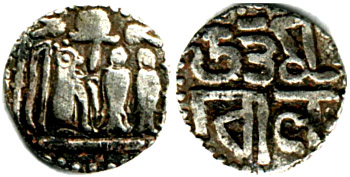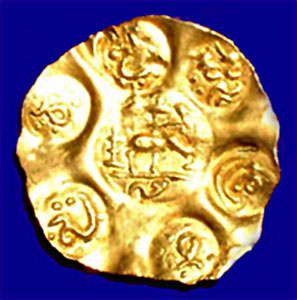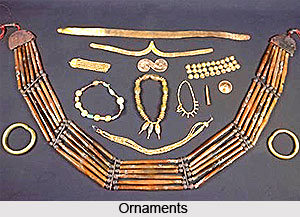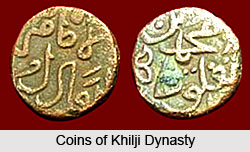Introduction
Sufism, mostly referred to as a way of life, encompasses certain mysticism within it. To be a true human being, free from all bondages and honest with the Almighty is being a Sufi. Sufism is all about learning how to be a complete person, who exists in total harmony with the Universal Consciousness, who has surrendered his will completely to the will of the God and has merged his identity with that of God. Sufism is thus a matter of conduct. It concerns with one`s conduct and is a matter of practice. It is difficult to explain Sufism theoretically but can only be understood.
Origin of Sufism
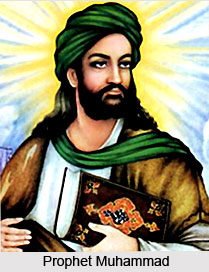 Origin of Sufism goes a rather long way back in history and is often said to be as old as humanity itself. Traditionally, it is associated with the advent and development of Islam. Even though Sufi Saints had existed even before Prophet Muhammad, they were not known or recognised as Sufis at that that time. It was only a few centuries later that they came to be known as Sufis. According to Qushayri (988 AD) and some other scholars like Shihabuddin Suhrawardi, the term `Sufi` was first used at the end of second century Hijri i.e. in the early ninth century AD. The term Sufi did not find a mention either in the Sihah-i-Sittah compiled in the 9th and 10th century AD or in the Arabic dictionary, the Qamus compiled in the early 15th century AD.
Origin of Sufism goes a rather long way back in history and is often said to be as old as humanity itself. Traditionally, it is associated with the advent and development of Islam. Even though Sufi Saints had existed even before Prophet Muhammad, they were not known or recognised as Sufis at that that time. It was only a few centuries later that they came to be known as Sufis. According to Qushayri (988 AD) and some other scholars like Shihabuddin Suhrawardi, the term `Sufi` was first used at the end of second century Hijri i.e. in the early ninth century AD. The term Sufi did not find a mention either in the Sihah-i-Sittah compiled in the 9th and 10th century AD or in the Arabic dictionary, the Qamus compiled in the early 15th century AD.
The prime reason which led to the greater acceptance and proliferation of Sufism was the increasing worldliness and materialistic lifestyle of the leaders of the Muslim community. There were a number of people at this time who were growing increasingly disgruntled with the highly materialistic and extravagant lifestyle of the rulers and wanted a system based on values and ethical lifestyle. The infidelity and sinful rule of the Umayyad immediately following the first four caliphs, created such political and social conditions that many Muslims became disgusted and turned to asceticism and a life of seclusion to seek peace of soul. Towards the end of the first century Hijri, there were many who moved beyond the life of ascetics and seclusion to contemplation, to vision and to ecstasy. The life of austerity and poverty, which was until now conceived essential for gaining access to paradise, came to be reconciled as an expression of devotion to God. Not only that, gradually the focus shifted from material wealth to the lack of desire for possession i.e. a true detachment from all worldly things. It was out of this feeling of disenchantment and a need to establish a sober and morally correct lifestyle that Sufism gained practice. Sufism, to its followers meant to acquire the inner knowledge, the enlightenment that could enable them to realise the Truth, which is also the underlying objective of all the religions. This being central to all religions, the Sufi fundamentals existed in all religions and, therefore, Sufism travelled beyond the borders of religion. The essential of Sufism found an expression in all societies trying to achieve perfection.
It is believed that earlier there was a sect called `Kamal Posh` (the blanket wearers). They went to every prophet of their time seeking spiritual advice. No one, however, could satisfy them completely and they were told to do this or that. But when they went to Prophet Muhammad, they were completely satisfied and, therefore, they stayed with him. When the Kamal Posh were with Prophet Muhammad, he only looked at them without saying anything to them. He created love in their hearts (transmitted the knowledge of the Truth from his heart to their hearts) and that is why they were completely satisfied. The significance of this tale lies in the heart-to-heart revelation that the Prophet gave to these men. Prophet Muhammad is said to have received a twofold revelation. One was the knowledge of the Absolute Truth in his heart, and the other that is embodied in the content of the holy Quran. While the Quran was conferred the status of the Holy Book to govern the conduct of the Muslims, the transmission of knowledge of the Absolute Truth in the heart of Prophet Muhammad was meant only for a few, from heart-to-heart, through the line of succession i.e. from the Master to the disciple and so on. All the Sufi Tariqats (different Sufi Orders), therefore, trace their origin in Prophet Muhammad.
Sufism is based on the teachings of the Quran. The effort of Prophet Mohammed was to unite the Arabian tribes, make them believe in one God, reform them and to give them a religion adapted to their own requirements. In order to evolve them as a perfect society, they were asked to follow the Quran. The essential ingredients of Sufism are, therefore, found in abundance in the Quran. The mystical tendencies exhibited by some of Prophet Muhammad`s companions and friends also find justification and support from the Quran. The tendency of renunciation of worldly pleasures and intense fear of the God and His judgments were profoundly manifested in the Sufism of these early Muslims.
History of Sufism
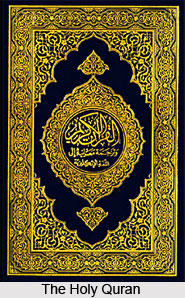 History of Sufism follows a long period of evolution since the time of the prophet. In tracing the history of Sufism, the earliest instances of Sufism can be found even before the time of the Prophet Muhammad. However it was only after the arrival of the prophet that the practice came to be known by the name of Sufism.
History of Sufism follows a long period of evolution since the time of the prophet. In tracing the history of Sufism, the earliest instances of Sufism can be found even before the time of the Prophet Muhammad. However it was only after the arrival of the prophet that the practice came to be known by the name of Sufism.
The very early period of Islam witnessed it as a religion where reconciliation and harmony with people was being gently persuaded rather than being coerced into it. However, the undutiful rule of the Umayyad immediately following the first four caliphs created such political and social conditions that many Muslims adopted asceticism and a life of seclusion to seek peace of soul. Towards the end of the first century Hijri, there were many who moved beyond the life of ascetics and seclusion to contemplation, to vision and to ecstasy. The life of austerity and poverty, which was hitherto conceived essential for gaining access to paradise, came to be reconciled as an expression of devotion to God. Not only that, gradually the focus shifted from material wealth to the lack of desire for possession i.e. a true detachment from all worldly things. Most of them were, however, orthodox Muslims in their beliefs and practices. They had yet not distinguished spirituality from the religion and laid great emphasis on the teachings of the Holy Quran and traditions.
The Sufis in the period immediately after Prophet Muhammad spent their lives in fasting and in observing the rules of Sharia (the Islamic code of conduct), giving up the worldly pleasures- wealth, fame, feasts and women. They spent their time in solitude away from the society, seeking anonymity, hunger and celibacy. They usually lived on scanty food and wore little clothes. They were more concerned with the punishments and rewards for the infidels and the believers.
The early Caliphs conquered large areas, accumulated lot of wealth and became supreme political powers of their time. This resulted in many ancient centres of learning and particularly the traditional schools of mystical teaching also falling under their stronghold. Buddhism by that time was firmly rooted in the Central Asia that had come under the empire of Islam together with northwest India. These external contacts had their impact on various Sufi practices. They adopted and evolved a variety of practices (apparently different from the ritual prayers) to enhance their spiritual experiences and to attain the state of ecstasy.
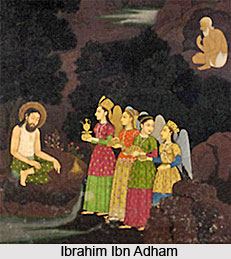 This evolution of Sufi thinking was greatly influenced by many factors including emergence of Mutazilis-a rationalist group within Islam, Batinis-an esoteric group, Bisheriyas-an antinomian group, Christological sects like the Gnostics and Manicheans and the mystical groups like the Hermetics and Neoplatonists. Sufi mystics are reported to be visiting monasteries of Christian monks, studying their devotional literature and having discussions with them on spiritual aspects. Many Sufis claimed their teachings were known even before the advent of Islam. They believed that these were received and handed down from antiquity through various saints and prophets in the form of knowledge transmitted from heart-to-heart.
This evolution of Sufi thinking was greatly influenced by many factors including emergence of Mutazilis-a rationalist group within Islam, Batinis-an esoteric group, Bisheriyas-an antinomian group, Christological sects like the Gnostics and Manicheans and the mystical groups like the Hermetics and Neoplatonists. Sufi mystics are reported to be visiting monasteries of Christian monks, studying their devotional literature and having discussions with them on spiritual aspects. Many Sufis claimed their teachings were known even before the advent of Islam. They believed that these were received and handed down from antiquity through various saints and prophets in the form of knowledge transmitted from heart-to-heart.
By the end of eighth century AD, Sufism had evolved to a great extent as an unorthodox way of realising the Truth. Some of the early great Sufis were Hasan of Basra, Wasil Ibn Ata, Abdullah Ibn Maymun, Ibrahim Ibn Adham, Rabia of Basra, Maruful Karkhi, Khabit, Abu Sulaiman Darani, Ahmad Ibn Harith al Muhasibi, Dhul Nun Misri, Abu Yazid Bistami, Hussain Mansoor Hallaj, Abu Said, Omar Khayyam, Sanai, Ibn Arabi, Maulana Rumi and Hafiz.
During the eighth to ninth century AD theosophical and Gnostic speculations started finding place in the thoughts of various Sufi Masters, such as, Maruful Kharki, Abu Sulayman ud Darani and Dhul Nun Misri. This was the period when works of Greek philosophers such as Pluto, Aristotle and Porphyry were translated and studied. This period witnessed a rationalistic movement, which influenced Sufism to take a new form and absorb in it the characteristic features of theosophy, Gnosticism and Pantheism. Dhul Nun Misri was a learned person, who often experienced conditions of ecstasy. He considered devotional music to be a divine influence, which could help one attain unto the God. He is credited by Jami in Nafhat ul Uns to be the first person to profess the tenets of Sufism. Abu Yazid al Bistami was one of the greatest Sufi Masters of the ninth century AD, who was the first one to speak about the reality of Fana i.e. annihilation or merger of one`s identity completely with the God. The pantheistic features of Sufism are attributed to Bayazid. Thus in the ninth century AD, the Sufis recognized that spiritual progress couldn`t be achieved by following Sharia alone. It was necessary for guiding their conduct, but not enough. They started adopting various spiritual practices over and above Sharia, known as Tariqat (the path). They considered following Shariat and Tariqat essential to reach the Haqiqat (the Truth).
In the later centuries, Sufism was also greatly influenced by the broad mindedness of the Kashmiris, a composite of Hindu-Muslim culture, especially in the 15th century AD. It was during this time that Sufism came to be influenced by other religious beliefs as well.
The ideal of life was considered to purify the soul, have love, regard and trust in the humanity and to achieve a perfect harmony of co-existence. There appeared a close resemblance between the lifestyles of Sufis and Hindu saints as well as Buddhist monks.
It is therefore evident from the ongoing discussions on Sufism that the Sufis have been in existence since ancient times and Sufism is much older than Islam. Sufism as seen today has evolved as a synthesis of various thoughts. The advent of Islam, with the proclamation of Prophet Muhammad of the unity of the Supreme Being i.e. there is one God, had the greatest influence on the Sufis of post-Islamic period.
Philosophy of Sufism
The essence of Sufism is the quest for absolute non-existence, a state that needs no existence besides the Almighty`s Existence. The idea of an intimate communion of the self with the Eternal Reality is central to being a Sufi. Sufism is a kind of spiritual activation of the person, a process of the evolution of self in harmony with the others. Sufis believe in evolution of a man into a complete man by enlightenment through one`s own experience and understanding.
Sufis hold that man is God`s greatest and highest creation having his own individuality, knowledge and bliss, yet he is not perfect. It is said that the God has made human beings in His own image and therefore there is a reflection of all His Attributes in the human being. Since God Himself is perfect, the desire to achieve perfection is reflected profoundly in the human beings.
Man has evolved into a human being after passing through various stages of evolution, which reflect in his being. All that is there in the universe is reflected in him. Even before his birth God has blessed man with these characteristic qualities in the most balanced state. Since human beings are not perfect God has bestowed upon man the faculty of reasoning to distinguish between good and bad and to achieve perfection through practice. God has provided man with all that is necessary to make progress, mind, wisdom, consciousness and so on, and His Divine energy, which is called `Mercy`. It is the characteristic quality of God`s Grace that the man is not left alone, only he has to use his effort and will power to make progress. One may choose the path of downfall by forgetting one`s original nature and adopting worldly things, and therefore become a victim of suffering and pain or one may use his discretion to search for the right path. True repentance and a wholehearted prayer pave the way for one to reach the right path. The essence of Sufism lies in keeping to the right path and achieving the perfection.
Principles of Sufism
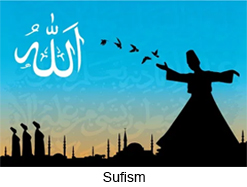 The basic principles of Sufism were provided by Abdul Khaliq al Ghujdawani, who was one of the greatest Sufi Masters of the Naqshbandi Order of Sufis. Till about the 6th century Hijri, the Sufis practised loud Dhikr (Jikr, Japa or remembrance) i.e. they used to recite the name of the Almighty loudly by tongue. It was Shaikh Gujdawani who introduced and propounded the system of silent Dhikr. He was the first one in the Sufi orders to use silent Dhikr and was later considered the master of silent Dhikr. He coined the following phrases to which three more principles were added later by Muhammad Bahauddin Shah Naqshband after whom the order acquired its name. In his book Faslul Kitab, Shaikh Muhammad Parsa, a friend and biographer of Shah Naqshband, said that the method of Shaikh Khwaja Abdul Khaliq al Ghujdawani in Dhikr and the teachings enunciated in his Eight Principles were embraced and hailed by all the forty tariqats (Sufi Orders) as the way of Truth and loyalty.
The basic principles of Sufism were provided by Abdul Khaliq al Ghujdawani, who was one of the greatest Sufi Masters of the Naqshbandi Order of Sufis. Till about the 6th century Hijri, the Sufis practised loud Dhikr (Jikr, Japa or remembrance) i.e. they used to recite the name of the Almighty loudly by tongue. It was Shaikh Gujdawani who introduced and propounded the system of silent Dhikr. He was the first one in the Sufi orders to use silent Dhikr and was later considered the master of silent Dhikr. He coined the following phrases to which three more principles were added later by Muhammad Bahauddin Shah Naqshband after whom the order acquired its name. In his book Faslul Kitab, Shaikh Muhammad Parsa, a friend and biographer of Shah Naqshband, said that the method of Shaikh Khwaja Abdul Khaliq al Ghujdawani in Dhikr and the teachings enunciated in his Eight Principles were embraced and hailed by all the forty tariqats (Sufi Orders) as the way of Truth and loyalty.
The principles of Sufism laid down by him are as follows:
Hosh dar Dam (Conscious Breathing)
The true seeker should always be alert that he does not take any breath devoid of God`s remembrance. He must remain in God`s Presence with every breath. Every breath taken consciously is alive and every breath taken in recklessness is to be considered to have been lost. One should ensure with every breath that he does not indulge in doing a wrong or a sin. It is necessary to be in the Presence of the Almighty with every breath, in order to realise the Essence of the Creator. It is, however, difficult for seekers to secure breath from heedlessness. Therefore, they must safeguard it by seeking forgiveness, which will purify and sanctify it and prepare them for the Real Manifestation of the Almighty everywhere.
Nazar bar Kadam (Watch Your Step)
Each step moved forward should be taken consciously i.e. one should not do anything which may drag him down or which may obstruct his spiritual progress. It also means that one should avoid looking here and there aimlessly as the mind forms its impressions by seeing things. This is why Sufi saints ask their followers to look at their feet while walking. As the mind becomes more and more purified by various practices, it becomes more and more prone to be afflicted. A spot on a spotless clean sheet is more likely to be visible and noticed than on a dirty sheet. The first glance is, however, harmless but a second look i.e. a deliberate look forms an impression on the mind. One should therefore, take each step forward in His remembrance. Spiritually perhaps it may mean that one must keep his objective constantly in view and if one does so one is bound to reach his destination.
Safar dar Watan (Journey Homeward)
This means that the seeker must move from the world of creation to the world of Creator. Moving away from worldly desires and human weaknesses and acquiring godly characteristics is known as `Safar dar Watan.` The Naqshbandi Sufi Order divides this journey into two parts. The first is external in which the seeker desires and searches for the Master. The internal journey begins with the blessing and grace of the Master. The internal journey leads to the purification of his heart and makes him eligible to receive the Divine grace.
Khilawat dar Anjuman (Solitude in the Crowd)
Khilawat means seclusion, both external and internal. External seclusion requires the seeker to be away from people, staying by himself and spending his time in the remembrance of God. This helps in gaining control over sensual perceptions and reaching the state of internal seclusion. The internal seclusion means whether amidst a crowd, walking or doing anything else, one should constantly have his mind fixed on the Almighty. This is the state that the Sufis need to adopt so that they remain constantly in the Presence of the Almighty. Worldly affairs do not disturb them.
Yad Kard (Essential Remembrance)
`Yad` means remembrance and `Kard` means essence of remembrance. To keep oneself continuously engaged in reciting the `Japa` (the internal practice as directed by the Master) and in such a manner that the seeker starts feeling the presence of the Master or the Almighty in his heart is the Essential Remembrance.
Baj Gasht (Returning)
The literal meaning of `Baj Gasht` is to return back to the origin. In its true sense, however, it refers to developments during internal practice when the seeker may come across different experiences such as sighting of light, activation of the mystique centres, acquiring miraculous powers etc. However, these experiences may often result in the downfall of the seeker as they may arouse the ego. Therefore the great masters of this order have recommended the seekers to keep on praying to the Almighty at regular intervals affirming that He alone is the objective of the seeker. The seeker should beg the Almighty for his love and knowledge and to give him strength in whatever condition he finds himself.
Nigah Dasht (Attentiveness)
The seeker of God should always keep an eye on his internal condition so that no doubt or ill thought ever arises and he constantly keeps on remembering the Almighty. If ever such a thought arises, one should immediately check that thought, otherwise if such a thought stays in the mind once, it may become difficult to clear it later. Sufism is to protect one`s heart from bad thoughts and from worldly inclinations.
Yad Dasht (Recollection)
It means continuous remembrance. When the seeker through practice becomes so adept that the remembrance continues in the heart effortlessly on its own, it is called Yad Dasht.
The three principles added by Muhammad Bahauddin Shah Naqshband are as follows:
Wakoof Zamani (Awareness of Time)
The seeker must watch that the time at his command is spent in the remembrance of the Almighty and he must make all efforts to make progress on the path of spirituality. The seeker must recount his actions and deeds and seek His forgiveness for the wrong doings.
Wakoof Adadi (Awareness of Numbers)
According to the principle of Wakoof Adadi, one should while holding the breath recite the name of the God, feeling His Presence in the heart, in odd number i.e. 5,7,9,11,21 etc. The real meaning of Wakoof Adadi, however, appears to be that the Almighty is One and He likes Oneness. It perhaps also means that one should remember the Almighty alone.
Wakoof Kulbi (Awareness of the Heart)
The seeker should always have an eye on his heart (Kulb) so that his attention is always towards the Divine Presence and it is not be diverted elsewhere.
Duties of Disciple in Sufism
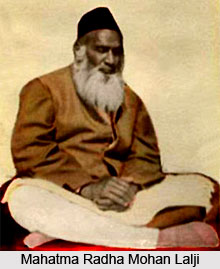 Duties of disciple in Sufism are to be carried out with utmost respect and dedication. The master-disciple relationship is one of the most fundamental and important aspects of Sufism, and the true path to the realisation of God can be achieved by a student only with the help of his master or Pir. The Sufis therefore add a lot of importance to the proper Adab (respect) for one`s master. It is believed that if the disciple`s love for the master is true then it is his duty to respect him at all times. Sufis consider not only the Master but his family also equally respectable.
Duties of disciple in Sufism are to be carried out with utmost respect and dedication. The master-disciple relationship is one of the most fundamental and important aspects of Sufism, and the true path to the realisation of God can be achieved by a student only with the help of his master or Pir. The Sufis therefore add a lot of importance to the proper Adab (respect) for one`s master. It is believed that if the disciple`s love for the master is true then it is his duty to respect him at all times. Sufis consider not only the Master but his family also equally respectable.
The Sufi disciples accord the highest place to their master. In this context, Shaikh Ahmad Faruqi has said that the disciple must observe proper etiquettes in the company of his Master. Shaikh Ahmad Faruqi has also said that when the disciple is in the presence of his Master, he should withdraw his attention from all other things and turn his mind totally towards him. He should not start offering prayer (Namaz) if the time arrives, nor should he engage in performing, except on the order of the Master. None of his actions should show even slightest disrespect for the Master. If he receives some blessings from any saint he must know that it is only his Master`s grace. Even though the blessing is flowing from the other Saint is actually received by him due to his allegiance to his master.
It is the duty of the disciple to consider even the most insignificant word of the Master as absolute law. Mahatma Ram Chandraji used to say that until the disciple becomes completely attuned to his Master, shedding his own will, he is not able to acquire the Divine knowledge that he is looking for. Mere effort on part of the disciple does not lead him to perfection. A Guru (Master) is needed for this. By oneself alone, one can never go beyond the level of the mind. The mind cannot empty itself of itself. How can one empty out the mind, if one is constantly working through the mind. One must be able to leave it, to forget everything. One cannot do this oneself, as the mind cannot go beyond itself. Thus a Guru is needed.
In the Naqshbandi Order of Sufis, said Mahatma Radha Mohan Lalji, no effort on the part of the disciple is needed. The Master through his grace does everything for the disciple. A real Guru, a Satguru, knows how to mould the disciple from deep within, just by a mere sight. The Master does not impose conditions. He is like a loving mother. The child can be angry, can run away but the mother does not take it very seriously. She cares for the child just the same. Similarly, the disciples can and do sometimes leave the Master, but the Master is never supposed to do so since the Master disciple relationship is forever. The disciple cannot go anywhere if he is pledged to the Master. The Master is like an experienced rider who makes the horse go where he wants. But disciples are not slaves. They are free. Even when the personality wants to run away it is difficult for it to do so, the Higher Self knows better. This is a system of liberation, of freedom.
The role of the Master in Sufism is of prime importance. It is he who ascertains by his power whether the disciple has reached the stage of complete surrender, whether he has annihilated himself in the Master or not. If that is so, the Master passes on the disciple to his Master and so on. In course of time, the consciousness of the disciple gets so absorbed in the Masters of the chain that he possesses their spiritual powers. He is then passed still higher up the chain until he merges completely in the Universal Consciousness. The duties of the disciple therefore have to be performed with dedication and with utmost respect for the guru. He alone is able to take the disciple towards his ultimate goal of unity with the almighty and it is therefore the moral duty of the disciple to perform his duties as expected.
Chakras in Sufism
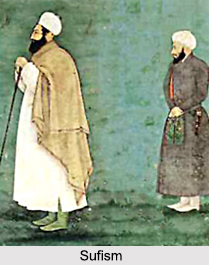 Chakras in Sufism form the central path of the Naqshbandi way of practice. Also known as the science of subtle centres, the science of the Chakras is the path leading straight towards the goal that avoids undue hardship and the risk of going astray. This is the extraordinary gift of the Naqshbandi Sufi way of practice to humanity. Shaikh Ahmad al Faruqi was one of the greatest exponents of this science, better known as Ilm-e-Lataif.
Chakras in Sufism form the central path of the Naqshbandi way of practice. Also known as the science of subtle centres, the science of the Chakras is the path leading straight towards the goal that avoids undue hardship and the risk of going astray. This is the extraordinary gift of the Naqshbandi Sufi way of practice to humanity. Shaikh Ahmad al Faruqi was one of the greatest exponents of this science, better known as Ilm-e-Lataif.
For a better understanding of this science, it is essential to comprehend the nature of the creation of the universe and the position of man in Creation. It is held by Islam, as all other major religions, that God created the universe by commanding it to `be` in order that He may be known and the state of bliss enjoyed by Him can be enjoyed by His creation as well. The entire universe thus originated from the one Absolute Truth, God, and since the entire universe originated from God, some saints believed in the unity of existence (Wahdat al Wujud). This means that God reveals Himself in a gradually descending order of degrees, whereas some others believed that everything is because of God (Wahdat al Shuhud). For them the degree of reality inbuilt in the successive stages of creation is not the same. They, specially the Mujaddidi Shaikhs of the Naqshbandi Order, propounded the theory of reflections and shadows of the Absolute Truth manifesting in different degrees in the created world. The two theories are, however, a matter only of taking a different viewpoint of the same truth and can be reconciled if one considers that the essence of the entire creation is the Essence of God.
The creative power of the God is said to have manifested at three levels. The first of these levels contained the seeds of all possibilities of manifestation (Hiranyagarbha), followed by the level of undifferentiated existence (non-manifest or Avyakta) and the level of manifestation of exterior forms (manifestation or Vyaktu). These three levels of manifestation are considered to correspond to the causal body (Karan Sharir or the spirit), the subtle body (Suksham Sharir or the mind) and the gross body (Sthul Sharir or the physical body) of Man, the highest creation of the God, which occupies the most eminent position amongst the creatures. Man is also called a microcosm i.e. a prototype of the macrocosm. It is said that Man is the most excellent and the noblest of all creation, who was created in the likeness of God i.e. he has been blessed to realise all the possibilities of the cosmos.
The cosmic evolution is considered to begin with the coming into existence of the Ahankara (Mahtatva-the individual consciousness). It represents the earthly principle that governs creation from a macrocosmic point of view. Ahankara gives rise to Shabda (the vibration), the subtle principle of the element other (Akash), the first most subtle of the five corporeal elements (Punch Bhuta or Panch Tatvas) that compose the physical body of the Man. Shabda gives rise to Sparsh (touch), the subtle principle of the element air (Vayu), which in turn gives rise to Rupa (form), the subtle principle of the element fire (Agni). From Rupa springs the Rasa (essence, savour), the subtle principle of the element water (Jal) and lastly the Gandha (odour) that corresponds to the element earth (Prithvi).
These very five elements (Panch Bhuta or Panch Tatvas) i.e. ether, air, fire, water and earth make the gross body of the Man. Their subtle principles are situated at the five subtle centres or chakras, situated inside the body of the Man. These are:
| Chakra | Location | Subtle Principle | Element |
| Muladhar | Rectum | Gandha | Earth |
| Svadhisthan | Organ of Procreation | Rasa | Water |
| Manipurak | Navel | Rupa | Fire |
| Anahat | Heart | Sparsh | Air |
| Vishuddh | Throat | Shabda | Ether |
Teachings of Sufism
The central doctrine of Sufism is Wahdat-al-Wujud, the `oneness of being`. This is derived directly from the Shahada in Islam which is understood not only as `there is no god but God` but also as `there is no reality except Reality`. One of the Names of God, indeed, is al-Haqq, which means `Reality` or `Truth`. The Sufis teach that the relative has no reality other than in the Absolute, and the finite has no reality other than in the Infinite. In Islam, man has access to the Absolute and the Infinite through the Holy Quran, which is the revelation of God to the world, and also through the Prophet who, within the world itself, is God`s very reflection.
Sufism teaches that God can only be known when the human ego is extinguished and done away with as it stands in the way of God-realisation. This does not mean that the immortal essence of the soul has to be destroyed. What does in fact need to dissolved is the mental chaos, made up of passions and imaginings, which has a constant tendency to restrict consciousness to the level of temporary appearances.
When this veil of selfishness is lifted from the Spirit which is hidden underneath, then for the first time things are seen as they really are. God is seen in His all-embracing Presence. The presence of God is, according to Sufi teaching, not the brain but the heart. The heart is the seat, not of the sentiments, but of the Intellect or Spirit (ar-Ruh), which penetrates to Reality and transcends mental forms.
The consciousness of man is said to be captured in a dream-like state of forgetfulness known as Ghafla. It is for this reason that man must be `reminded` of That which he has forgotten, and this is the reason for what is known as Dhikr, which the Sufi must practise in a large variety of ways. In essence Dhikr includes in itself the concepts of means recollection, mindfulness, contemplation and invocation.
Sufism can be considered as something approaching a universal faith with liberal teaching and great tolerance as exhibited in the conduct of most of the Sufis. Sufism does not just find expression in merely the mental dimensions but also in poetry and the visual arts. It has found great acceptance among its followers mainly because it can speak without hindrance not only to learned believers, but also to the simple man of the people. The goal of the mystical path is essentially the transcending of the ego, and this path can only be embarked upon with grace (tazvfiq).
Leaders of the Sufi Movement
The great pioneers of the 13th century Sufi movement were four friends known as "Chaar Yaar". Baba Sheikh Farid Shakarganj of Pakpattan (1174-1266); Jalaluddin Bukhari of Uch Bahawalpur (1196-1294) Bahauddin Zakaria of Multan (1170-1267) and Lal Shahbaz Qalandar of Sehwan (1177-1274). The Sufi who left an indelible mark both on India and on the history of Sufism was Abul Hasan Ali Ibn Usman al-Hujwiri, known as Data Ganj Bakhsh, who reached Lahore in 1035 AD. The order of the Chistis, founded by Khawaja Abdal Chisti was introduced into India by Khwaja Muinuddin Chisti.
Role of Pir in Sufism
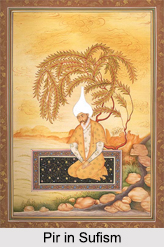 Role of Pir in Sufism is of prime importance as it is the Pir who helps the seekers of God to achieve their goal. The most distinguishing feature of Sufism is in fact the relationship between the Pir or the master and the disciple. The Pir is like a spiritual leader whom the disciples follow. The seeker in order to attain his goal must follow the directions of his Master, who may lay down for him certain rules and practices, and guide him in every detail of his life. The teacher knows that the requirements of individuals vary. Not everyone is at the same stage of evolution, nor is the nature of everyone alike. No two disciples are, therefore, treated in the same manner. Human beings are unique, and the true Master knows his job. He will treat them according to their possibilities, their character and their past conditioning. The teaching is given according to the time, the place and the state of the evolution of the disciple. The Master, however, does not go against any religion, all religions for him are alike, and they are only different roads to the One Truth.
Role of Pir in Sufism is of prime importance as it is the Pir who helps the seekers of God to achieve their goal. The most distinguishing feature of Sufism is in fact the relationship between the Pir or the master and the disciple. The Pir is like a spiritual leader whom the disciples follow. The seeker in order to attain his goal must follow the directions of his Master, who may lay down for him certain rules and practices, and guide him in every detail of his life. The teacher knows that the requirements of individuals vary. Not everyone is at the same stage of evolution, nor is the nature of everyone alike. No two disciples are, therefore, treated in the same manner. Human beings are unique, and the true Master knows his job. He will treat them according to their possibilities, their character and their past conditioning. The teaching is given according to the time, the place and the state of the evolution of the disciple. The Master, however, does not go against any religion, all religions for him are alike, and they are only different roads to the One Truth.
The Master knows what is in the best interest of the disciple and how his character can be moulded, quickly and without undue strain. In fact the whole exercise relates to surrender of ego. A seeker by taking the shelter of the Master surrenders his ego at the feet of his Master. This is the easiest and quickest way to surrender one`s ego. A person who attempts to go across the path of spirituality without the aid of the Master is said to have Shaitan for his guide and is compared to a tree that for want of a gardener`s care brings forth none or bitter fruit. The Shaitan is a symbolical representation of one`s ego. The Master having already travelled the path knows the ins and outs of the path and helps the disciple achieve his objective. Besides, the Master also helps the disciple to keep his ultimate objective constantly in mind and in not getting distracted by Siddhis (miraculous powers) that might be acquired by the seeker in the process.
The Sufi leaders have developed a system of Tavajjoh for training the disciples. The Sufi Saints through Tavajjoh, i.e., focusing their attention on to the disciple, produce great spiritual changes in disciples. Through Tavajjoh they transmit their spiritual energy to their Murid (disciple). The methods of Tavajjoh varied in different Tariqats (different Sufi Orders). There are about forty Sufi Tariqats, the main four being Naqshbandia, Chishtia, Qadaria and Suhurawadia. The centre of every order at any given time is a Murshid (Master), who is considered to be a spiritual heir of the original founder and as such received his authority through his immediate predecessor.
Every Pir has a few basic or `seed ideas` that represent the fundamental note of his teachings. These ideas, which he has absorbed in himself, become a part of his existence, and lead him to the realisation of the Truth. His teachings, therefore, revolve around these ideas. As a result, the teacher only imparts that knowledge that he has assimilated in himself. He may not convey the whole amount of his teaching. Some times the teacher may ask his disciple to go to another teacher for him to acquire some knowledge, which he may not possess. If the teacher considers it necessary he would ask the disciple himself but the disciple is never expected to do so on his own.
No knowledge, however, can be transmitted to the disciple until he is able to comprehend it and is prepared to receive it. One has to grow to the Truth and only then it is communicable. The task of the Master is to arouse the desire in the disciple to seek the Truth and to keep this flame burning. The knowledge can be transferred efficiently when the consciousness of the disciple gets absorbed in the consciousness of the Master. The path for this merger is complete surrender.
It is the duty of a real Satguru (master) to see to it that there is no desire left within the disciple at the time of his death. The desire only leads to another birth. The Master serves as a focus of attention for the mind. This is because the mind needs something to hold on to and it takes the form of the thing it thinks about. If, therefore, the disciple focuses his attention on the Master, he becomes like the Master.
The spiritual knowledge cannot be conveyed through words. The real knowledge can be transmitted only from heart-to-heart. The Sufis, therefore, insist on the necessity of getting in touch with a living Master.
The Absolute Truth being beyond perception, it is only His representative, the Master, who can lead the disciple to the Truth. The Master is like a door, the one side of which faces the closet and the other side to the open i.e. the Master is the doorway to lead the disciple to God. But for this fact, there is no difference between the Master and the God who is linked both to the finite and the Infinite.
It is the Master who by his grace gives faith to the disciple. The Master being like the disciple, i.e. both being human, it assures the disciple that it is possible for him, with all his human weaknesses to overcome them and to become one like his Master. The disciple is nourished with the essence of the Guru.
The Master is said to re-live his life as the disciple. If, therefore, the Master is a competent Master, he is sure to take the disciple with him, the only condition being the commitment of the disciple to the Master. In fact, even the question of commitment is relevant only up to a certain level, for it is the Master, who knows how to guide his disciple, how to produce the change in him. The Sufis take great care to avoid hurting the feeling of others. Therefore, even to their disciples, they do not frankly say anything directly but indicate that in hint. But a hint is given always. If the disciple does not take the hint, the Master may give him another opportunity. But it all depends upon the will of God. The Master can fill the heart of the disciple with Divine love in a moment but it depends upon the faith and courage of the disciple. It depends upon the capacity of the disciple. The Master gives him as much as he can bear.
The Master is always benevolent and merciful. Even his scoldings have his deep love hidden behind them. It is meant for the benefit and progress of the disciple. To clean the carpet of the dust, it needs to be struck with a stick. It may appear to be a cruelty to the carpet but in fact it is not cruelty, it is necessary to clean it, to remove the dust. Similarly, even if a disciple is thrown away from the door of the Master, as it happened with many Sufi saints, it is for his benefit as the pain of separation arouses the fire of longing and continuous remembrance of the beloved, that is the Master, which purifies the heart of the disciple.
Thus the role of the Pir in Sufism is of immense importance as it is the master who shows the disciple his real self. The Master knows how to help his disciple or to protect him from undesired effects. It is through the calm and persistent efforts of the master that the disciple is able to achieve his goal.
Orders of Sufism
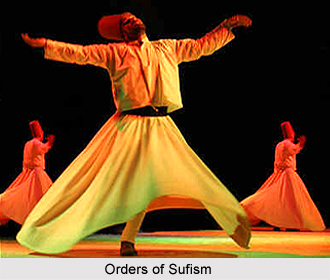 There are four main Orders in the philosophy of Sufism and the Orders are mainly depending upon various ways through which the founders of the Orders spread their message of Sufi philosophy. The Orders have played an important role in the dissemination of the Sufi philosophy in all over the world and some of the great Sufi authors were involved with the foundation of the Orders of Sufism. The authors like Khwaja Abu-Ishak Shami Chishti, Abdul Qadir Gilani, Sheikh Ziaudin Jahib Suhrawardi and Khwaja Bahaudin Naqshband founded the four Orders. The Orders of Sufism are named after their names and they are known as the Chishti Order, the Qadiri Order, the Suhrawardi Order and the Naqshbandi Order.
There are four main Orders in the philosophy of Sufism and the Orders are mainly depending upon various ways through which the founders of the Orders spread their message of Sufi philosophy. The Orders have played an important role in the dissemination of the Sufi philosophy in all over the world and some of the great Sufi authors were involved with the foundation of the Orders of Sufism. The authors like Khwaja Abu-Ishak Shami Chishti, Abdul Qadir Gilani, Sheikh Ziaudin Jahib Suhrawardi and Khwaja Bahaudin Naqshband founded the four Orders. The Orders of Sufism are named after their names and they are known as the Chishti Order, the Qadiri Order, the Suhrawardi Order and the Naqshbandi Order.
Chishti Order: The Chishti Order is an ancient and influential order among the four orders of Sufism within the mystic branches of Islam. It was founded in a small town named Chisht, near Herat, about 930 CE and it has continued to spread with its own glory, till today. The great classical Sufi author, Khwaja Abu-Ishak Shami Chishti, or `the Syrian`, founded the Chishti Order. Abu Ishak was born early in the tenth century and was a descendant of the Prophet Mohammed. The followers of Abu-Ishak are actually a branch of the Line of the Masters that became known as the Naqshbandi or `the People of the Design`, at a later period.
Qadiri Order: The Qadiri Order is considered to be one of the most prominent and influential one among the four Orders of Sufism. The Order or the Path was organised by the followers of Abdul-Qadir of Gilan. Abdul-Qadir Gilan was born in 1077 CE at Nif, in Gilan district, to the south of the Caspian Sea and he died in 1166. The Order is one of the most widespread among the Sufi Orders in the Islamic world and it can be found in the countries like India, Bangladesh, Pakistan and Turkey. It can also be found in the Balkans and in much of the East and West Africa, in Europe and America, as well.
Suhrawardi Order: The Suhrawardi Order is a prominent Sufi Order and was founded by the Sufi saint and philosopher, Sheikh Ziaudin Jahib Suhrawardi. Sheikh Ziaudin lived during the years of 1097-1168 and he was a murid or disciple of the classical Sufi author, Mohamed El-Ghazali. He deeply followed the discipline of the Sufi ancient Junaid and he found the Order in the twelfth Christian century. The Suhrawardi Order has greatly influenced the countries like India, Persia and Africa and the mystical activity of the people of these countries was influenced by the methods and personages of the Order.
Naqshbandi Order: The Naqshbandi Order was named after one of the greatest personages of the dervish school called Khajagan (`Masters`), Khwaja Bahaudin Naqshband. The Order is one of the most prominent and popular one among the Sufi Orders and it rose in Central Asia. The Order greatly influenced the development of the Indian and Turkish empires. The Sufi saints of the Naqshbandi Chain are also called as the `Designers` or the `Masters of the Design`. The Order gave rise to many specialist schools that adopted individual names. According to many scholars, the Naqshbandi Order is the earliest of all the mystical `chains of transmission`.
Concept of Love of God in Sufism
 Concept of Love of God in Sufism rests on an understanding of his perfection and culminates in ultimate unity with him. Love of the soul is reflected as spirituality and it is governed by the Divine law. This force constantly exerts its pressure on the things to move towards and merge with the beloved i.e. the mass (gross matter) is continuously attracted towards other mass and the soul has its inherent urge to meet the Supreme Soul. Big or small, living or non-living, this fundamental force of love exists universally. This strong force of love would have had its way if there had been no movement. The soul would have merged with the Supreme soul. However, it is the movement which prevents this. Perhaps it is the desire to exist that is expressed in the continuous movement. The movement is a fulfilment of the Almighty`s desire that the soul through movement should gain experience and thereby realise the Truth. Living creatures are oblivious of the true nature of things and the real purpose of life, and it is only a few to whom He reveals the secret of His love and takes them to their original state of love.
Concept of Love of God in Sufism rests on an understanding of his perfection and culminates in ultimate unity with him. Love of the soul is reflected as spirituality and it is governed by the Divine law. This force constantly exerts its pressure on the things to move towards and merge with the beloved i.e. the mass (gross matter) is continuously attracted towards other mass and the soul has its inherent urge to meet the Supreme Soul. Big or small, living or non-living, this fundamental force of love exists universally. This strong force of love would have had its way if there had been no movement. The soul would have merged with the Supreme soul. However, it is the movement which prevents this. Perhaps it is the desire to exist that is expressed in the continuous movement. The movement is a fulfilment of the Almighty`s desire that the soul through movement should gain experience and thereby realise the Truth. Living creatures are oblivious of the true nature of things and the real purpose of life, and it is only a few to whom He reveals the secret of His love and takes them to their original state of love.
Love can be expressed as the desire to become perfect, to remove all imperfection. This is true of the love at the physical plane as well as at the spiritual plane. At the spiritual level, one desires to remove imperfection from his conduct. The love for God is also explained similarly as God is the most Perfect One. He has created the universe and He runs it perfectly. One, who does not understand it lives in the world with anguish, pain, suffering and sorrow, he lives miserably. One, who has this knowledge, also lives like an ordinary person in the world, but he lives with the understanding that the world has been created by the God, the Lord of the universe, who is running it perfectly. This understanding makes him live happily in the world in accordance with His desire and it results in love for the God, reflecting in a universal love.
When one talks of the love of God, it is like the love between a mother and a child. One could consider the God as the mother of all mothers and the seeker as the child, who has to traverse the path from a state of grown up ego to the state of complete dependence on God i.e. surrender unto Him. With the complete surrender of the ego one acquires the spiritual knowledge that his essence is the essence of God i.e. cessation of the duality and that his reality is nothing but the Reflection of the God. With this realisation one reaches the state of Unity i.e. the state of Oneness. In this state there is no difference between the love, faith and enlightenment. This is the true knowledge. When this realisation dawns one`s self exists no more.
The love for the God has, therefore, to be understood as the complete Unity with God. However, since God is Absolute, many people find it difficult to surrender completely and love something so abstract. This is why most people need the help of a spiritual master. The Master has a physical body and is like them. The disciple can perceive the Master`s existence through his own senses. It is easy for him to surrender his ego at the feet of his Master. The love for the Master gradually leads the disciple to the realisation that there is no duality between the Master and the God. The face of the Master is only a mask under which lies the Reality. It is for this reason that the Sufis lay stress on the love for their Master.
In unity with God what exists is only the Reality of the God and one sees the existence of God alone in all beings. His love takes the form of Divine love for all beings. The love for God does not mean hatred towards the world; rather it results in the understanding that others need to be treated in the same manner as one would himself like to be treated.
One cannot claim to love God by neglecting his duty towards others. The real love for God is to do one`s duty with utmost care and attention, while at the same time remaining in His Presence i.e. taking it to be a Divine order to discharge his obligations most faithfully.
The great Sufi Master Bayazid established supremacy of love by saying that `the Almighty can be approached only through love. Love is all encompassing. The Almighty can be realized only through love. The illiterate Gopis had won the love of Lord Krishna only due to their unfettered love. The true love brings in enlightenment. In fact there is no difference between Love and Enlightenment. Love is God and the purpose of acquiring knowledge is to know the God. Love is the culmination of knowledge and the height of enlightenment.







